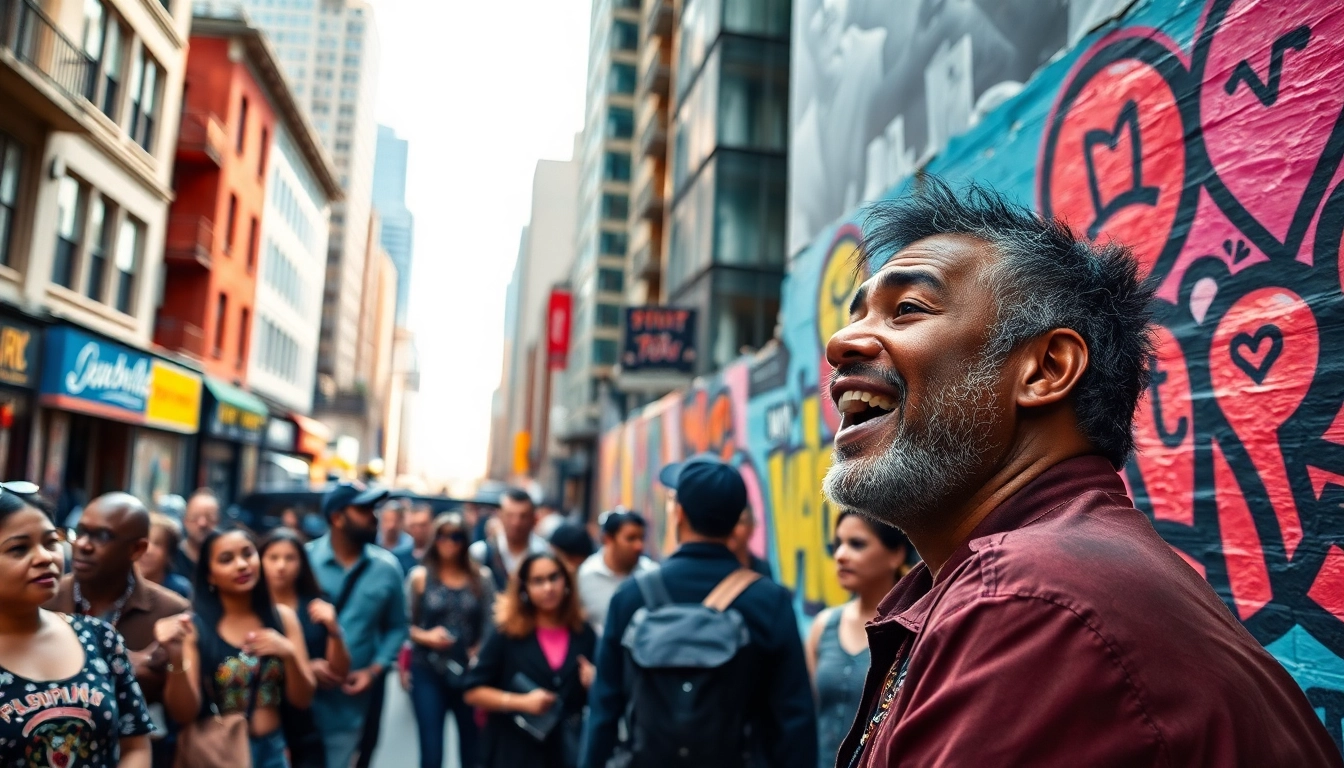Understanding Social Commentary in Art
Definition and Importance of Social Commentary
Social commentary is a form of expression that conveys insights, critiques, or reactions to societal issues through various artistic mediums. It transcends basic representations of reality, engaging with themes such as race, gender, class, and political conflicts. Art becomes a powerful vehicle for change, as artists can challenge norms, provoke thought, and inspire action. The importance of social commentary lies not only in raising awareness but also in fostering understanding and empathy among audiences. This process can serve as a catalyst for discussion, prompting viewers to reflect on their beliefs and the world around them. Engaging with Social Commentary effectively can transform passive viewers into active participants in societal dialogue.
Historical Context of Social Commentary in Art
The roots of social commentary in art can be traced back to ancient civilizations, where artists used their work to reflect cultural and political dynamics. In the Middle Ages, religious themes dominated, but dissenting voices began to emerge during the Renaissance, addressing the human condition and societal hierarchies. Fast forward to the modern era, and movements such as Impressionism, Dadaism, and Surrealism exemplified how artists utilized their platforms to critique the status quo. Post-World War II saw an explosion of social commentary, particularly in the realm of pop art and graffiti, as artists like Andy Warhol and Banksy tackled consumer culture and societal disparities, showcasing the powerful synergy between art and activism.
Key Themes in Modern Social Commentary
Today, modern social commentary encompasses a wide range of themes that reflect our complex society. Issues of race and identity have taken center stage, often exploring the nuances of intersectionality and representation. Gender inequality remains a focal point, with female artists utilizing their work to challenge sexism and advocate for women’s rights. The environment and climate change are also prominent themes, as artists raise alarms about ecological degradation and advocate for sustainability. Additionally, technological advancements prompt commentary on privacy, digital identity, and the implications of a hyper-connected world. These themes are not merely artistic choices; they are reflections of pressing cultural discussions that resonate deeply with contemporary audiences.
Exploring Techniques and Mediums
Various Art Forms Used for Social Commentary
Artists utilize a diverse array of mediums to express social commentary, each carrying its own unique nuances. Painting and sculpture are traditional forms that have long been associated with artistic critique. However, today’s artists also embrace installation art, performance art, and street art, each creating immersive experiences that engage viewers on multiple sensory levels. Digital art and illustration have emerged as vital mediums, allowing for rapid dissemination through social media channels and enhancing the reach and impact of the message. Furthermore, video and film have become critical tools in commentary, providing narratives that highlight social injustices through storytelling and powerful imagery.
The Impact of Digital Media on Social Dialogue
In the digital age, social media platforms have revolutionized the way social commentary is created and consumed. Artists can now bypass traditional gatekeeping mechanisms, sharing their work directly with global audiences. This democratization of art enables grassroots movements to flourish, giving voice to marginalized communities. Hashtags and online campaigns can galvanize movements quickly, allowing for collective action and sustained dialogue around critical issues. However, navigating this landscape also poses challenges, as the superficial nature of social media can lead to debates lacking depth. Artists must remain vigilant to leverage these tools effectively, ensuring their messages resonate authentically amid the noise.
Collaborations and Community Engagement Strategies
A successful social commentary often involves collaboration with communities, further enhancing its relevance and impact. Artists can engage with local groups to understand their perspectives and incorporate authentic narratives into their work. Collaborative projects, such as community murals, public installations, or interactive workshops, allow for dialogue and shared creation, empowering participants and fostering a sense of ownership. Additionally, partnerships with organizations and non-profits can amplify the reach of the message, blending artistic endeavors with community activism. This synergy transforms art into a tool for social change, facilitating genuine conversations and encouraging active involvement.
Analyzing Successful Social Commentary Examples
Case Studies of Influential Artists
Several artists have made significant contributions to social commentary, shaping the conversation around pressing issues. One such artist is Ai Weiwei, whose works challenge political oppression and advocate for human rights. His haunting installations often blend personal narrative with global commentary, inviting viewers to reflect on their values and responsibilities. Another influential figure is Kehinde Wiley, known for his vibrant portraits that celebrate black identity and challenge historical representation in classical art. His work repositions marginalized identities into historical narratives, inviting new discussions on race and representation. These case studies illustrate how artists’ unique experiences and perspectives can powerfully shape cultural conversations.
Viral Art Projects and Their Cultural Impact
In the age of viral culture, several art projects have gained international attention, raising awareness about critical social issues. For instance, The Fearless Girl statue, placed opposite the Charging Bull on Wall Street, became a symbol of female empowerment and gender diversity in leadership roles. This sculpture sparked discussions around corporate responsibility and women’s rights, demonstrating how a single work can ignite widespread dialogue. Similarly, projects like the “Inside Out” initiative by JR invite people to share their stories through large-scale portraits in public spaces, creating a collective narrative that challenges social norms and fosters community dialogue.
Visual Symbols in Social Commentary
Visual symbols play a crucial role in conveying social commentary, often encapsulating complex ideas into easily understandable images. Colors, forms, and iconography evoke emotions and establish connections with the audience. Artists often employ recognizable symbols—like the raised fist representing solidarity or the rainbow flag symbolizing LGBTQ+ pride—to communicate their messages effectively. These symbols can transcend language barriers, creating universal connections that spark empathy and understanding. Moreover, the reinterpretation of historical symbols within contemporary contexts can bring new life to old discussions, re-engaging audiences in long-standing societal issues.
Implementing Social Commentary in Your Own Work
Tips for Artists to Develop Their Voice
For artists looking to develop their unique voice in social commentary, authenticity is paramount. Understanding personal experiences and beliefs provides a foundation to build upon, helping artists articulate their perspectives meaningfully. Experimenting with different mediums and styles can enhance one’s ability to convey messages compellingly. Additionally, studying influential artists and their techniques can offer valuable insights while also inspiring personal growth. Engaging in continued education—whether through workshops, classes, or professional critiques—can refine artistic skills and deepen understanding of socio-political contexts.
How to Engage Audiences in Meaningful Conversations
Engaging audiences effectively requires careful consideration of messaging and presentation. Utilizing storytelling techniques can create a narrative that resonates with viewers, inviting them into a dialogue rather than merely presenting information. Incorporating interactive elements, such as Q&A sessions or community forums, encourages participation and deepens understanding. By creating a space for discussions, artists can facilitate meaningful conversations that lead to actionable insights. Furthermore, considering the target audience and their perspectives can significantly enhance the impact of the commentary, fostering empathy and bridging divides.
Measuring the Impact of Your Commentary
Quantifying the impact of social commentary can be challenging yet essential for artists seeking to assess their effectiveness. Metrics such as social media engagement, attendance at exhibitions, or feedback from community discussions can provide insight into how audiences perceive and engage with the work. Surveys and evaluations can also help gauge audience reactions and the depth of conversations sparked by the artwork. Additionally, observing changes in community dynamics or public discourse surrounding the themes presented can indicate the broader impact. This feedback loop not only assists artists in refining their efforts but can also inform future projects aimed at fostering societal change.
Future Trends in Social Commentary and Art
Anticipating Shifts in Cultural Conversations
As societal issues evolve, so too does the landscape of social commentary in art. Emerging global challenges—such as economic disparities, climate crises, and digital privacy—are likely to dominate future artistic discussions. Artists will need to adapt and respond to these shifting conversations, finding innovative ways to engage audiences. As cultures become increasingly interconnected, the potential for cross-pollination of ideas and concepts can lead to vibrant artistic movements that reflect collective global consciousness.
The Role of Emerging Technologies in Art
The rapid advancement of technology is reshaping how artists create and disseminate social commentary. Virtual reality (VR) and augmented reality (AR) offer immersive experiences that allow audiences to engage with critical issues in new ways. Blockchain technology is also transforming ownership and distribution, giving artists greater control over their work while ensuring fair compensation. These technologies can facilitate innovative collaborations and broaden the reach of artistic messages, allowing for more interactive and participatory experiences that deepen audience engagement.
Building Sustainable Communities Through Art
Art has the potential to build sustainable communities by fostering a sense of belonging and collective action. Initiatives that encourage art as a medium for social dialogue can empower individuals and promote community cohesion. By prioritizing local engagement and collaboration, artists can create works that resonate within specific cultural contexts, addressing real needs and aspirations. Furthermore, programs that integrate art with education, sustainability, and social justice can cultivate a culture of awareness and responsibility, positioning art as a pivotal force in shaping future societal dynamics.



